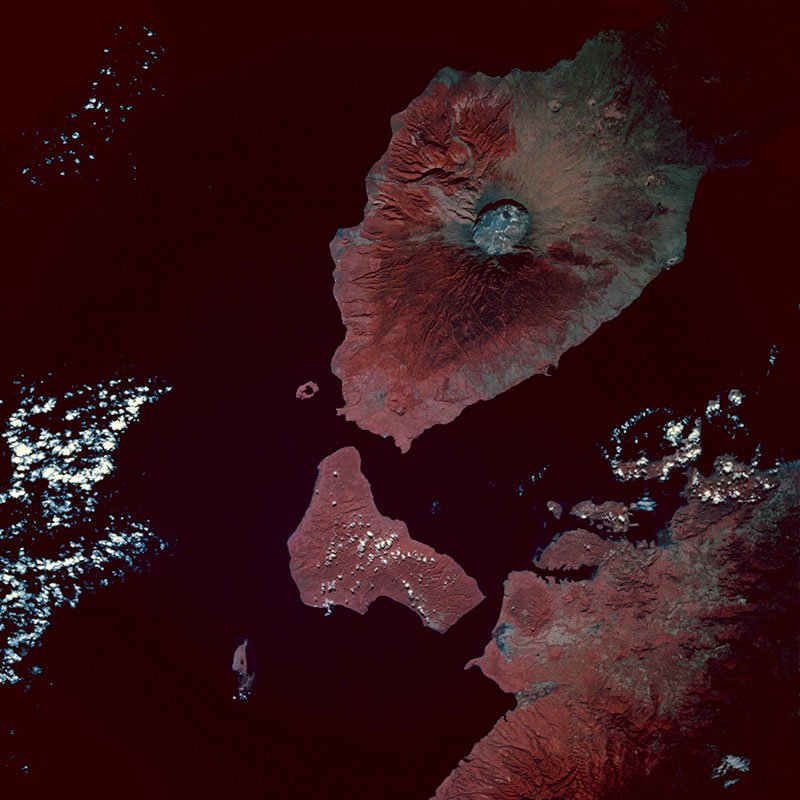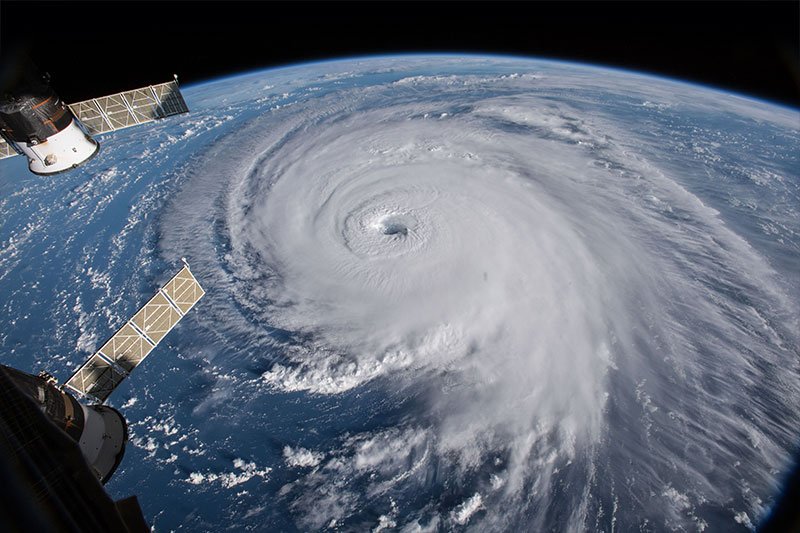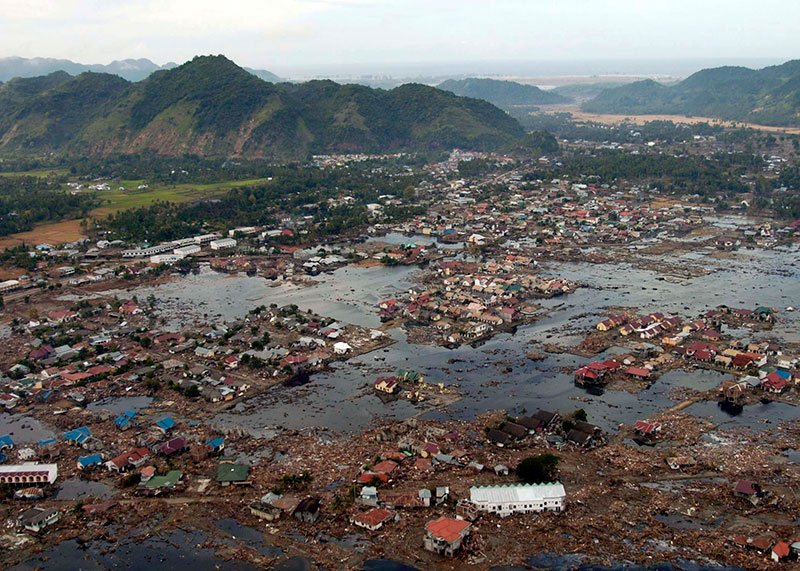Dealing With Disaster
What picture pops into your head when you hear natural disaster? A volcano blasting molten lava? A churning hurricane stirring up giant waves? Or maybe a giant tornado swirling across the plains?
Scientists who study these events call them natural hazards, not disasters. Volcanoes, floods, wildfires, and earthquakes occur naturally. Some even serve a purpose. Wildfires burn away the extra underbrush of a forest, leaving it healthier than before. Floods can deposit topsoil and nutrients for plants. And volcanoes create new land. When these hazards interact with people and buildings, they are considered disasters.
Originally, God created the world as a perfect place without danger. But disasters have been part of our world since sin entered creation (Genesis 3). The most intense disaster of all time was the global flood, which God sent to judge the sinful world of Noah’s day (Genesis 7–9). The flood changed our planet forever. Earth’s surface was torn apart, and land was rearranged like giant puzzle pieces. This caused volcanoes and earthquakes—including ones we experience today. Even the weather was affected. In fact, the changing climate of our world today was also caused by the flood.
Disasters will continue to happen in our fallen world until Jesus returns one day. But until that time comes, we can discover ways to stay safe when disasters do strike. Natural disasters can be frightening, but God has given us the intelligence to learn from them so that we can make our communities stronger and safer. Let’s look at some examples.

The Mt. Tambora crater is 3.7 miles across and 3,609 feet deep.
The Mt. Tambora Supervolcano Eruption of 1815
Whoosh . . . boom! On April 10, 1815, a volcano named Mt. Tambora on the Indonesian island of Sumbawa erupted. The blast was so loud that people on nearby islands thought they were being attacked with cannons. A massive cloud of ash and gas shot into the atmosphere, reaching 18 miles into the sky. The cloud covered the sun, turning day into night. Ash fell from the sky like snow. Rivers of lava flowed down the slopes of the volcano as earthquakes shook the island and massive ocean waves rushed onto shore.
After nearly three days, the catastrophe ended. Only a crater was left where Mt. Tambora once stood. Nearly 4,000 feet of rock had been blasted to smithereens.
The Mt. Tambora eruption was the largest in recorded history. The blast even affected the weather around the world for more than three years. The ash and gas in earth’s upper atmosphere caused the average temperature of the world to drop by one degree. In fact, the summer of 1816 was known as “the year without summer.” This radically changed the climate and resulted in terrible famines in parts of Europe and North America. It even snowed up to 18 inches in New England in the middle of June.
The Great Galveston Hurricane of 1900

The waters and winds of the Galveston hurricane turned entire houses on their sides!

Photo by NASA
The view of a hurricane from the International Space Station.
In September 1900, one of the worst hurricanes in American history swept over Galveston, Texas. Before the hurricane hit, Galveston was a popular tourist destination and the largest shipping port in the state of Texas. People in Galveston thought that their chance of being hit by a hurricane was slim—until September 8.
A hurricane rushed onto shore as a Category 4 storm, the second largest on the hurricane rating scale. It had winds with speeds over 135 miles per hour and waves that reached as high as 15 feet. Most of the buildings on the island were destroyed, the port was demolished, and thousands of people were hurt or killed.
But afterwards, the people helped each other to rebuild their town even stronger than before. These protection efforts, called mitigation (mi-ti-GAY-shun), included things like building the houses on stilts so that water could pass under them and constructing a wall to help break big waves and prevent them from hitting the town.
Today, scientists have radar and satellites that track hurricanes as they move across the oceans. Computer models can show emergency managers how strong the hurricane winds might be, how much rain could fall, and where the highest waves might be. This helps people plan and prepare for taking shelter when the storm makes landfall.
The Tri-State Tornado of 1925

The midwestern United States is famous for intense thunderstorms and tornadoes. In fact, it’s sometimes known as Tornado Alley. Cool air from Canada collides with warm, moist air rising from the Gulf of Mexico. As the warm air rises and the cold air falls rapidly, deadly lines of supercell thunderstorms (some of the most violent thunderstorms) and tornadoes can form. Today, we have warning systems and weather satellites to alert us about tornadoes, but 100 years ago that technology didn’t exist. But sometimes storms and tornadoes appear almost without warning—like the Tri-State Tornado of 1925.
On March 18 in southeast Missouri, a tornado touched the ground around 1 p.m. It spun into a monster EF5 tornado, the strongest on the tornado rating scale, before traveling all the way across Illinois and into Indiana. It finally fell apart around 4:30 p.m. It had traveled more than 73 miles across three states and caused more than $2 billion dollars in damages. The Tri-State Tornado was the longest lasting and deadliest tornado recorded in American history.
A Helping Hand
Here are a few ways professionals help protect us against disasters.
- With satellites and radar, meteorologists can track severe weather and warn people who are in danger.
- Engineers can design buildings that stand against earthquakes.
- Emergency managers can study past disasters to help their communities know where to shelter if a disaster does happen.
- Policy makers can make safety rules for construction workers to follow when building new towns, roads, bridges, and dams.
The Great Indian Ocean Tsunami of 2004

The 2004 Indian Ocean tsunami destroyed many villages.
Early on December 26, 2004, the Indonesian island of Sumatra was shaken by one of the most powerful earthquakes in history. But that was just the beginning. The undersea earthquake caused a big movement of water, creating massive waves called a tsunami. The energy from these waves traveled from the bottom of the ocean to the surface. As the waves reached the shore, they swept onto the land in towers of water that reached over 30 feet high in some places (that’s almost as tall as a telephone poll). The waves caused destruction even in eastern Africa, over 3,000 miles away. At least 225,000 people died in the disaster.
The tsunami was one of the most destructive disasters in current history and changed what scientists knew about tsunamis. They learned more about how tectonic plates (thick slabs of rock that make up earth’s surface) shift, slide, and lock. This helped scientists create better computer models that show what might happen if a large earthquake occurs in another part of the ocean. They can see where the resulting tsunami would go, how big it might be, and when it would arrive. This information helps emergency managers know what areas need to be evacuated to keep people safe.
Faith Over Fear
Psalm 46:1–3 says that “God is our refuge and strength, a very present help in trouble.” The Bible says that we shouldn’t fear, even though “the earth gives way” and “the mountains [fall] into . . . the sea,” or even when “waters roar and foam” and “mountains tremble.” Sounds a lot like the disasters you just learned about, right?
Natural disasters can seem frightening, but God has given us the intelligence and creativity to come up with ways to stay safe in a fallen world.
But while having a plan can make us feel better, the best comfort of all comes from God’s Word. Deuteronomy 31:8 says, “It is the Lord who goes before you. He will be with you; he will not leave you or forsake you. Do not fear or be dismayed.” And that’s true for all who trust in God—no matter what happens!
Help Keep Your Family Safe from Disasters
- Learn about the disasters that might affect your town.
- Talk about potential disasters with your family and come up with a plan for what you can do to stay safe.
- Make a disaster “go” bag with supplies like water, food, flashlights, and batteries.
- Visit Ready.gov for helpful tips and important information.
Kids Answers Magazine
What If Disaster Strikes?
When disasters like volcanoes and tornadoes strike, what can we learn to protect our communities in the future?
Browse Kids Issue- © 2025 Answers in Genesis
- Privacy Policy
- Contact
- About

